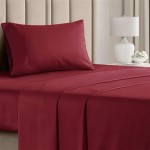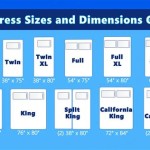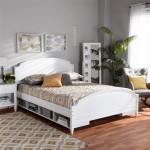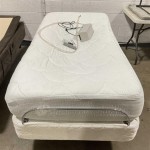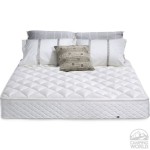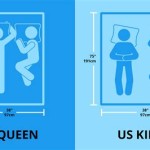What Is The Size Of A Full Bed Comforter?
Understanding the dimensions of a full bed comforter is critical for ensuring both aesthetic appeal and practical comfort. A comforter that fits properly will drape attractively on the bed and provide adequate coverage for sleepers. Selecting the wrong size can lead to an unsightly appearance, discomfort due to insufficient coverage, and premature wear and tear on the comforter itself.
The term "full bed" (also known as a double bed) references a specific mattress size within standardized bedding dimensions. Knowing this mattress size is the necessary first step in understanding the appropriate comforter size. A full mattress traditionally measures 54 inches in width and 75 inches in length. However, mattress depths vary considerably, ranging from standard (approximately 8-12 inches) to pillow-top and extra-deep (13 inches or more). This depth variation is a crucial factor to consider when selecting a comforter, as a deeper mattress will necessitate a larger comforter to achieve the desired overhang.
A comforter is a thick, quilted bedding item primarily designed to provide warmth and decoration. It is typically filled with down, feathers, wool, cotton, or synthetic fibers. The quilting pattern serves to evenly distribute the fill material within the comforter, preventing clumping and maintaining consistent insulation. Comforters are often used in conjunction with a top sheet, blankets, and other bedding accessories to create a layered sleep environment.
Given the standard dimensions of a full mattress (54" x 75"), manufacturers typically design full-size comforters to have dimensions larger than the mattress itself. This added size allows the comforter to drape over the sides and foot of the bed, providing both aesthetic appeal and practical warmth. The amount of overhang desired is a matter of personal preference, but a general guideline is to have at least 8-10 inches of overhang on each side. This will ensure that the comforter adequately covers the mattress and provides sufficient coverage for the sleeper, even when moving during sleep.
The most common size for a full-size comforter is 80 inches wide by 90 inches long. This size provides a generous overhang that is visually appealing and functional. However, this is not a universal standard, and variations exist among different manufacturers and product lines. Therefore, it is essential to carefully review the product specifications before purchasing a comforter to ensure it meets individual needs and preferences.
For instance, some manufacturers may offer full/queen size comforters that are slightly larger, typically around 86 inches wide by 92 inches long. These larger sizes are often marketed as being compatible with both full and queen-sized beds, offering greater versatility. However, using a larger comforter on a full bed may result in excessive draping, which some individuals may find visually unappealing or cumbersome.
Conversely, some manufacturers may produce full-size comforters that are slightly smaller than the typical 80" x 90" dimensions. These smaller comforters may be designed for individuals who prefer a more minimalist look or who have space constraints in their bedroom. In such instances, the overhang will be reduced, and it is crucial to ensure that the comforter still provides adequate coverage for the sleeper.
The depth of the mattress significantly impacts the choice of comforter size. A thicker mattress requires a larger comforter to maintain the desired overhang. For example, if a full mattress has a depth of 14 inches, a standard 80" x 90" comforter may not provide sufficient coverage, particularly on the sides of the bed. In such cases, it may be necessary to opt for a larger, full/queen size comforter or to consider adding a bed skirt to conceal the sides of the mattress.
Furthermore, sleeping habits and personal preferences play a role in determining the optimal comforter size. Individuals who tend to move around frequently during sleep may prefer a larger comforter to ensure they remain covered throughout the night. Conversely, individuals who sleep relatively still may find a smaller comforter to be sufficient. Couples sharing a full-size bed may also need to consider their individual preferences and sleeping habits when selecting a comforter size.
Importance of Measuring Bed and Desired Overhang
Accurate measurement is paramount when selecting a full bed comforter. Simply assuming that a standard full-size comforter will fit perfectly can lead to disappointment. Begin by measuring the width and length of the mattress. Next, determine the desired overhang on each side and at the foot of the bed. Add these overhang measurements to the mattress dimensions to calculate the ideal comforter size. For example, if the mattress is 54" x 75" and a 10-inch overhang is desired on each side, the required comforter width would be 54" + 10" + 10" = 74 inches. A similar calculation can be performed for the length.
Beyond the basic width and length, consider the depth of the mattress. A deeper mattress will reduce the amount of visible overhang, potentially making the bed look unbalanced if the comforter is too small. If the mattress is particularly deep, it may be necessary to increase the desired overhang measurement to compensate. Alternatively, a bed skirt can be used to hide the sides of the mattress and create a more finished look.
Measuring the existing bedding can also be helpful, particularly if satisfied with the fit of a previous comforter or duvet cover. Take measurements of the old comforter and compare them to the dimensions of potential new purchases. This can provide a valuable reference point and help avoid selecting a comforter that is significantly different in size.
Finally, remember to account for potential shrinkage. Some fabrics, particularly natural fibers like cotton, may shrink slightly after washing. If the comforter is made of a material prone to shrinkage, it may be wise to select a size slightly larger than initially calculated to compensate.
Material and Fill Considerations Affecting Size and Drape
The type of material used in the comforter's construction plays a significant role in its overall size and drape. Heavier fabrics, such as thick cotton or linen, tend to have a more substantial drape and may require a larger comforter to achieve the desired look. Conversely, lighter fabrics, such as microfiber or silk, will drape more loosely and may not require as much extra size.
The fill material also indirectly influences the perceived size and drape. Down and feather fills are generally lighter and more compressible than synthetic fills, allowing the comforter to conform more closely to the bed's shape. Synthetic fills, on the other hand, tend to be bulkier and may create a more rigid or poofy appearance. This difference in bulk can impact the perceived overhang and overall aesthetic.
The quilting pattern is another factor that can affect the comforter's drape and appearance. Tightly quilted patterns tend to make the comforter stiffer, while more loosely quilted patterns allow for greater flexibility and drape. Consider the quilting pattern when evaluating the comforter's size and how it will lie on the bed.
Furthermore, the weight of the comforter influences how it drapes. A heavier comforter will naturally pull downward, creating a more pronounced overhang. A lighter comforter, however, may be more prone to shifting or bunching up, especially if it is not properly secured. Consider the desired weight and warmth level when making a purchasing decision and how that weight will affect the overall drape and appearance.
Also consider the care instructions. Some materials, especially natural fibers, may shrink or distort during washing. If a comforter is prone to shrinkage, it is important to select a larger size to compensate. Following the manufacturer's care instructions carefully will help to maintain the comforter's shape and size over time.
Variations in Manufacturer Sizing and Labeling
Despite the existence of general guidelines for comforter sizes, variations exist among different manufacturers. These discrepancies arise from differences in manufacturing processes, target markets, and design aesthetics. One manufacturer's "full" size comforter may be slightly larger or smaller than another's, even though both are labeled as "full."
The use of terms like "full/queen" further complicates the issue. These comforters are designed to fit both full and queen-sized beds, often by splitting the difference in size between the two. While this can offer versatility, it may also result in a less-than-perfect fit for either bed size. On a full bed, a full/queen comforter may have excessive overhang, while on a queen bed, it may not provide adequate coverage.
Therefore, it is crucial to disregard the label "full" or "full/queen" and instead focus on the actual dimensions of the comforter. Always refer to the product specifications provided by the manufacturer, paying close attention to the width and length measurements. Comparing these measurements to the calculated ideal comforter size will ensure a proper fit.
Online retailers and physical stores often provide detailed product descriptions that include the comforter's dimensions. Review these descriptions carefully before making a purchase. If the dimensions are not readily available, contact the retailer or manufacturer directly to obtain the necessary information. Don't hesitate to ask specific questions about the comforter's size and suitability for a particular mattress and preferred overhang.
Reading online reviews can also provide valuable insights into the actual size and fit of a comforter. Other customers often share their experiences with the product, including whether it runs true to size or whether it tends to be larger or smaller than expected. Pay attention to reviews that mention mattress size and desired overhang, as these can provide a more accurate assessment of the comforter's fit.
In conclusion, selecting the correct size of a full bed comforter demands careful consideration of mattress dimensions, desired overhang, material properties, and manufacturer variations. By taking accurate measurements, reviewing product specifications, and considering personal preferences, individuals can ensure that their comforter provides both comfort and aesthetic appeal.

Comforter Sizes And Bedding Dimensions Important To Understand

Comforter Sizes Chart Sleep Junkie

Comforter Sizes A Complete Guide Nectar Sleep

Standard Bed Comforter Sizes Dimensions

Bed Sheet Sizes And Dimensions Guide Dreamcloud

Dorm Iq 6 The Best Comforter Size For A Twin Xl Bed Guide

Comforter Bed Comforters Blanket Bedding Sg

Comforter Bed Comforters Blanket Bedding Sg

Comforter Sizes And Bedding Chart Amerisleep

Bed Sheet Sizes Flat Sheets Fitted Comforter Dimensions Sewguide

